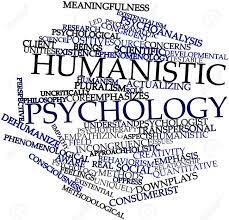Gaslighting
The Media Psychology of Gaslighting and Social Change
The influence of gaslighting is in your mind.
Posted December 2, 2022 Reviewed by Hara Estroff Marano
Key points
- Gaslighting has become culturally pervasive throughout social media.
- "Gaslighting" has been chosen by The Mirriam-Webster Dictionary as it's 2022 word of the year.
- Gaslighting includes psychological manipulation of a person or a group.
- Theories in media psychology help explain gaslighting.
Gaslighting has become culturally pervasive through social media. Conspiracy theories, trolls, fake news, and deepfakes are examples of tactics continuously reinforced through use on social media platforms such as Twitter, Truth Central, CNN, FOX, CNBC, and YouTube. The number of streaming services continues to grow, and many include gaslighting programming intended to influence social and political issues. It has become important to facilitate a wide public understanding of gaslighting.

Media manipulators use all forms of technology to massage messages designed to influence large numbers of viewers in ways that give the messenger predetermined, self-serving meaning. Now, because the word gaslighting has had such a dramatic increase in use, The Merriam-Webster Dictionary has named it its Most Used Word of the Year for 2022. Interest in the term rose by 1740% over the previous year. (Webster Words. 2022)
Gaslighting entered the lexicon after the 1938 play Gas Light was written by Patrick Hamilton and was boosted by the 1944 release of a movie adaptation about a man’s deliberate attempts to make his wife believe that she is going insane. His methods included dimming their Victorian home’s gas lights while insisting the lights were not dimming, thereby undermining and impairing her ability to trust her own perceptions. Gaslighting is about power and control. As an attempt at gaslighting progresses, the target often increasingly doubts their own memories, thoughts, and perceptions.

Gaslighting involves the psychological manipulation of a person or group over an extended period of time, which causes victims to question the reliability of their own experience. Victims become confused, insecure, and lose self-confidence which, demonically, only increases their dependence on the perpetrator or perpetrators to validate the reality of the victim's thoughts. The target grows more disoriented and insecure, giving the perpetrators enormous power over their victims.
Media psychology helps to explain gaslighting and assists our understanding of its hows and whys. Understanding the phenomenon is especially timely. The Covid years have dramatically increased the number of streaming channels and companion technologies, increasing the wide-scale use of gaslighting for influencing, persuading, group manipulating, and opinion-laundering in personal, social and political contexts.
Pictures, graphics, and sound are the stuff media communication is made of. The physiology of the senses in the brain is manipulated so that targeted perceptions are created in the mind. Synesthesia (the coupling of the senses), semiotics (communication through symbols and icons), and semantics, (the manipulation and use of words) all combine to foster perceptions translated and expressed through language (words and thoughts) into actions, behaviors, and embedded memories. By capturing attention, using repetition, psychovisualization, and compounded memory, the gaslighting effect is achieved.
The following are sample statements gaslighters might make:

“You are being paranoid.”
“That never happened.”
“Everyone agrees with me.”
“You have always been crazy.”
“There is something seriously wrong with you.”
“It’s your fault.”
“You have an active imagination.”
Calculated gaslighting can be an insidious exercise of power and control that creates and magnifies uncertainty. It causes individuals to mistrust everything they hear, feel, and remember. The gaslighting statements are designed to gain power over others.
Intentional gaslighting can occur within intimate relationships, child-parent relationships, medicine, racism, at work, in commerce, in marketing, advertising, sales, commerce, health care, and politics. Gaslighting may take place for years before a victim realizes what is happening.
Awareness and understanding are the antidotes to gaslighting. Understanding the abuses to which media is subject, can help neutralize and expose those who intentionally gaslight others to further personal motives. The potential for victimization also underscores the need to educate the population on how to develop and apply critical thinking skills when consuming media.
“Let there be light!”
The Society of Media Psychology and Technology, Division 46 of the American Psychological Association, embraces the study of psychology and the media. Because of the extraordinary global growth in streaming services, conflicting motives underlying myriad issues, and the increasing emergence of artificial intelligence and augmented reality, understanding the methods and uses of gaslighting as a strategy for power and control is increasingly important.
More research and increased public awareness are needed to combat this form of mind manipulation. It is valuable to increase public understanding of cultural and political gaslighting on important social issues. “Let there be light!”
Luskin Learning Psychology Series No. 65
- Special Thanks to Toni Luskin, Ph.D., for editorial and publishing support.
References
Cytowic, R.E. (2018), Synesthesia, Cambridge, MA, MIT Press
McLuhan, M., Fiore, Q. & Agel, J. (1967) The Medium is the Massage. An inventory of effects. Society for Media Psychology and Technology, APA Division 46, Spring, 2019.
Word of the Year, Merriam-Webster.com. Merriam-Webster. 2022.https://www.merriam-webster.com/words-at-play/word-of-the-year.




